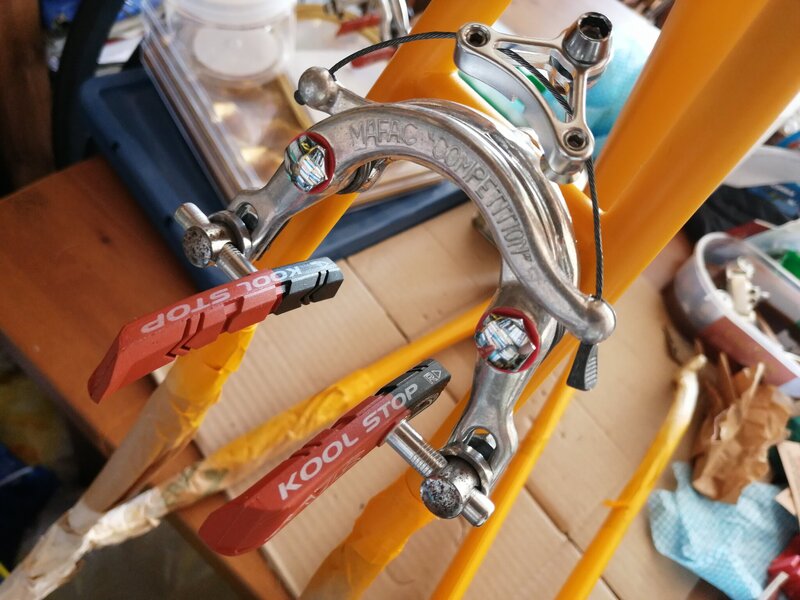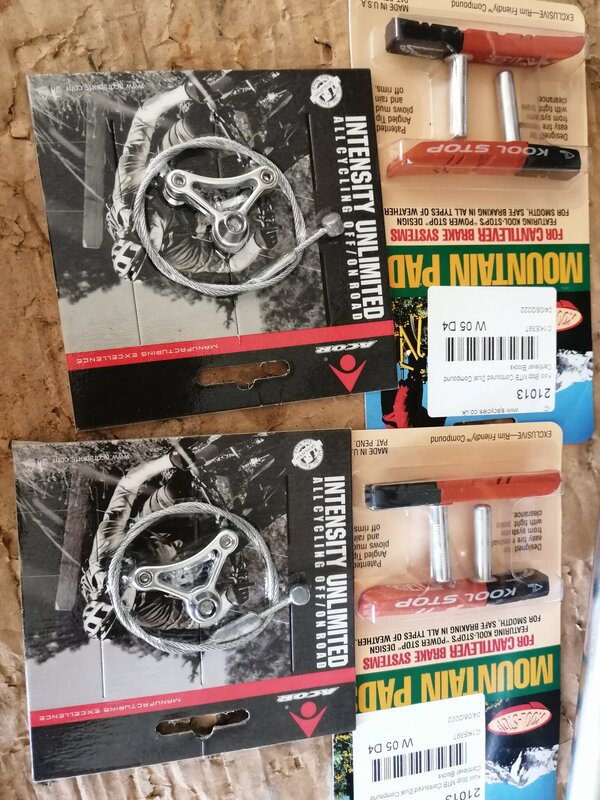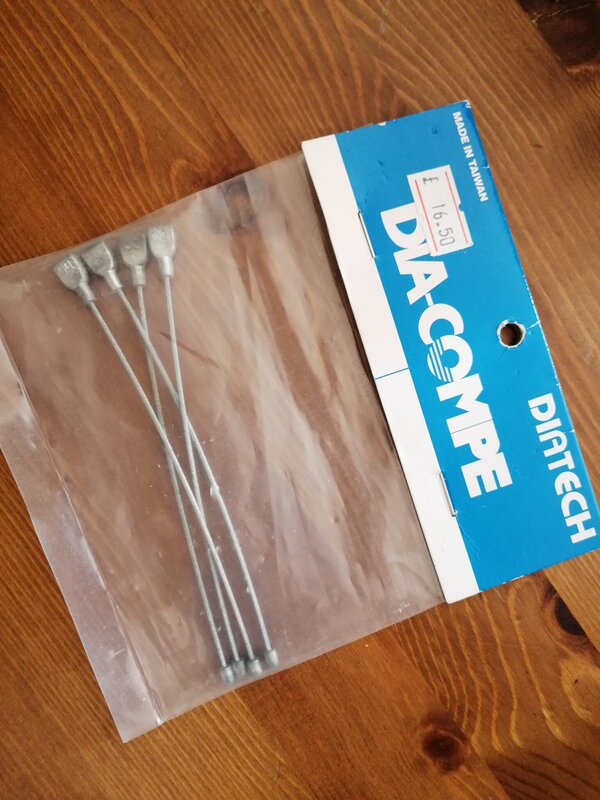You are using an out of date browser. It may not display this or other websites correctly.
You should upgrade or use an alternative browser.
You should upgrade or use an alternative browser.
1960 Peugeot PX10... Gravster!
- Thread starter zidortri
- Start date
BTW. Mafac brakes, especially the early ones usually clean-up really well
Like this one... More to come
Attachments
So those modified Mafac brakes...
Actually there are two types of modifications to be carried out on these brakes for them to perform properly on this build.
The first category of modifications is actually a mere natural upgrade using the improvements made on the build quality of some parts still manufactured to this day.
I believe this is an improvement that everyone should implement no matter the final set up of the brake - be it a traditional brake system with standard brake levers or a bespoke system using combined ergo levers such as the one that will be created on this project.
This simple upgrade actually consists of the following:
1- replacing the original Mafac brake pad with modern ones - such as Koolstop. Reason being that the modern compound are far more efficient than the original ones... which might also have dried and lost that malleability and (originally poor) grip.
Instead of replacing the compound pad only, it might be tempting to replace the complete block - that is the compound pad and the original Mafac holder, with an integrated pad and holder system. This is the solution I opted for as this provides the opportunity to fit bigger pads which increase the rim/pad interaction surface - improving thus the braking power.
2- replacing the Mafac straddle with a Día Compe one. The reason here is primarily due to the fact that the Dia Compe straddle is 100mm long as opposed to the Mafac one being 115mm long. That 15mm shorter length will induce a lower stretch of the cable when pulled up and therefore an increase in braking power.
The quality of the material used in the saddle is also to be taken into consideration - one might just reasonably assume that a more recent steel structure is stiffer than an older one, reducing a bit further the straddle stretch.
In addition it's always reasurring to have a recently manufactured straddle, whose structural sustainability over repeated braking tension, inside the caliper insertion slots, is entirely based on the bulges melted at each end.
I always have an apprehension (concern?) when I look at the straddle of any center pull brake... Always wonder what would happen if one of the melted bulges was to give in...
3- replacing the tiny Mafac yokes with wider Acor ones - pictured below.
The original Mafac yoke size and shape almost acts as a hook which seems to be prone to increase cable stretching. On the contrary the Día Compe yoke is wide and flat. This reduces the hook effect - prones to generate cable stretching, as it reduces the cable length on both side of the yoke.
All this might seem a bit theoretical and hard to quantify with clear numbers, but having tried both solutions - completely original Mafac brakes and the upgraded version as described above with the three modifications, the braking power is dramatically improved with the upgrade.
PS: on the below pictures the yokes are provided in a pack which also contains a cable. Although that cable is thick and trully sturdy neither its (too) wide diameter nor its ends allow it to fit into the Mafac caliper slots. Hence the need to buy specific Día Compe straddles.
Actually there are two types of modifications to be carried out on these brakes for them to perform properly on this build.
The first category of modifications is actually a mere natural upgrade using the improvements made on the build quality of some parts still manufactured to this day.
I believe this is an improvement that everyone should implement no matter the final set up of the brake - be it a traditional brake system with standard brake levers or a bespoke system using combined ergo levers such as the one that will be created on this project.
This simple upgrade actually consists of the following:
1- replacing the original Mafac brake pad with modern ones - such as Koolstop. Reason being that the modern compound are far more efficient than the original ones... which might also have dried and lost that malleability and (originally poor) grip.
Instead of replacing the compound pad only, it might be tempting to replace the complete block - that is the compound pad and the original Mafac holder, with an integrated pad and holder system. This is the solution I opted for as this provides the opportunity to fit bigger pads which increase the rim/pad interaction surface - improving thus the braking power.
2- replacing the Mafac straddle with a Día Compe one. The reason here is primarily due to the fact that the Dia Compe straddle is 100mm long as opposed to the Mafac one being 115mm long. That 15mm shorter length will induce a lower stretch of the cable when pulled up and therefore an increase in braking power.
The quality of the material used in the saddle is also to be taken into consideration - one might just reasonably assume that a more recent steel structure is stiffer than an older one, reducing a bit further the straddle stretch.
In addition it's always reasurring to have a recently manufactured straddle, whose structural sustainability over repeated braking tension, inside the caliper insertion slots, is entirely based on the bulges melted at each end.
I always have an apprehension (concern?) when I look at the straddle of any center pull brake... Always wonder what would happen if one of the melted bulges was to give in...
3- replacing the tiny Mafac yokes with wider Acor ones - pictured below.
The original Mafac yoke size and shape almost acts as a hook which seems to be prone to increase cable stretching. On the contrary the Día Compe yoke is wide and flat. This reduces the hook effect - prones to generate cable stretching, as it reduces the cable length on both side of the yoke.
All this might seem a bit theoretical and hard to quantify with clear numbers, but having tried both solutions - completely original Mafac brakes and the upgraded version as described above with the three modifications, the braking power is dramatically improved with the upgrade.
PS: on the below pictures the yokes are provided in a pack which also contains a cable. Although that cable is thick and trully sturdy neither its (too) wide diameter nor its ends allow it to fit into the Mafac caliper slots. Hence the need to buy specific Día Compe straddles.
Attachments
Last edited:
Similar threads
- Replies
- 9
- Views
- 2K
- Locked
- Replies
- 147
- Views
- 23K
- Replies
- 59
- Views
- 12K
Latest posts
-
-
-
Good tyres are expensive. Who else does skids on them anyway?😃
- Latest: MattiThundrrr
-
-


